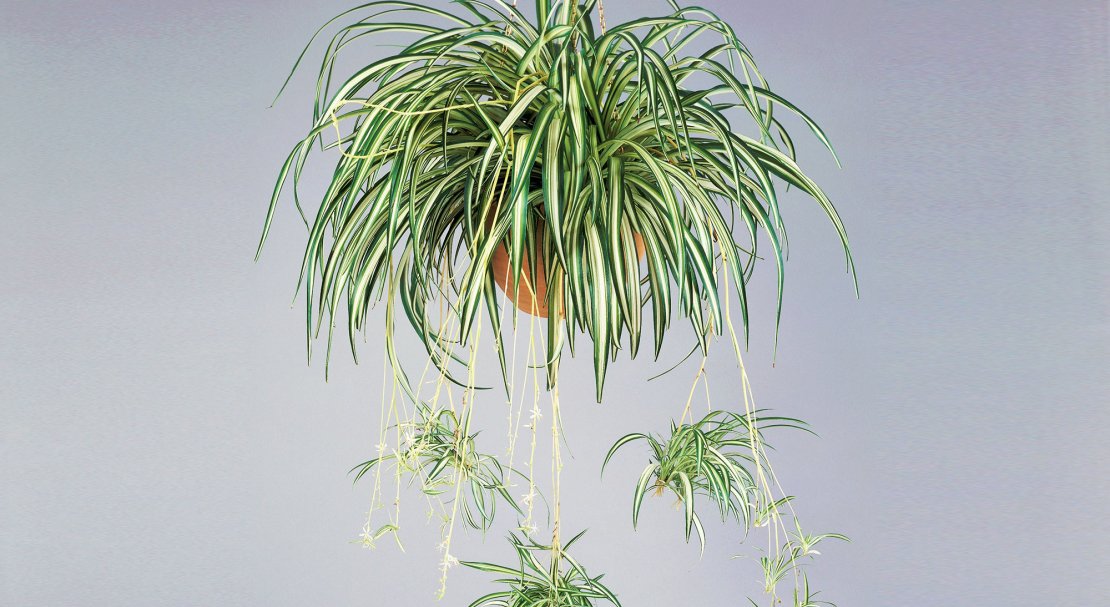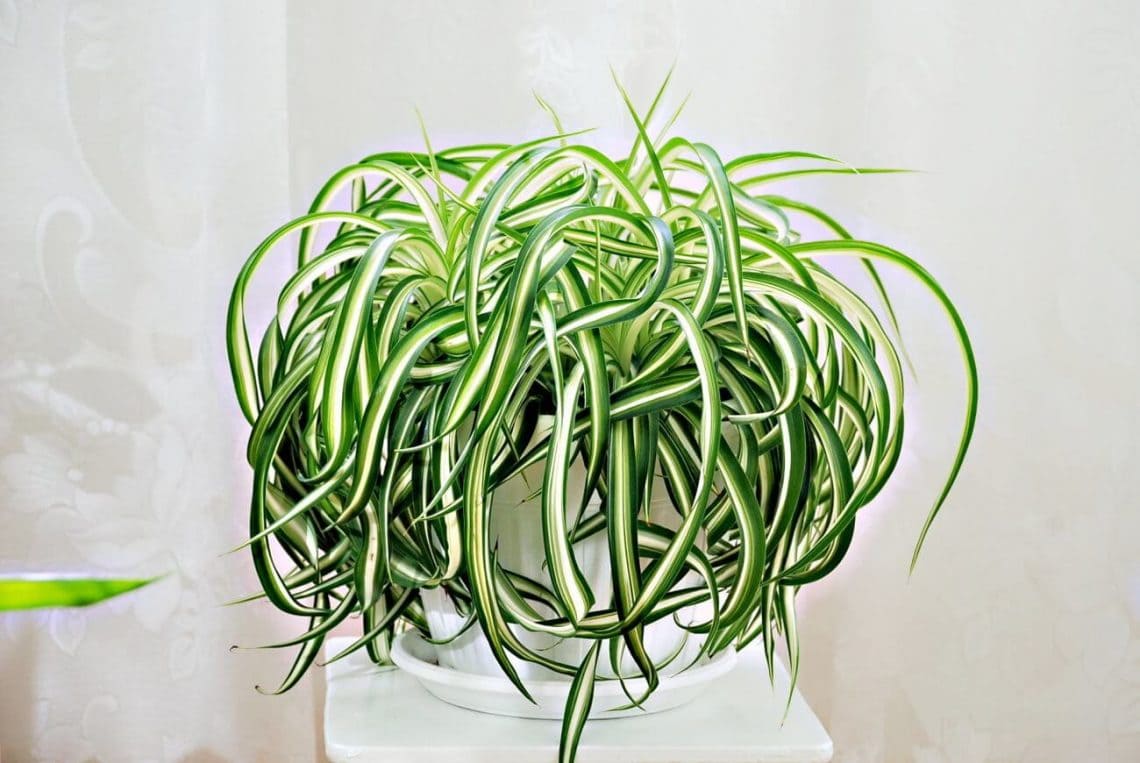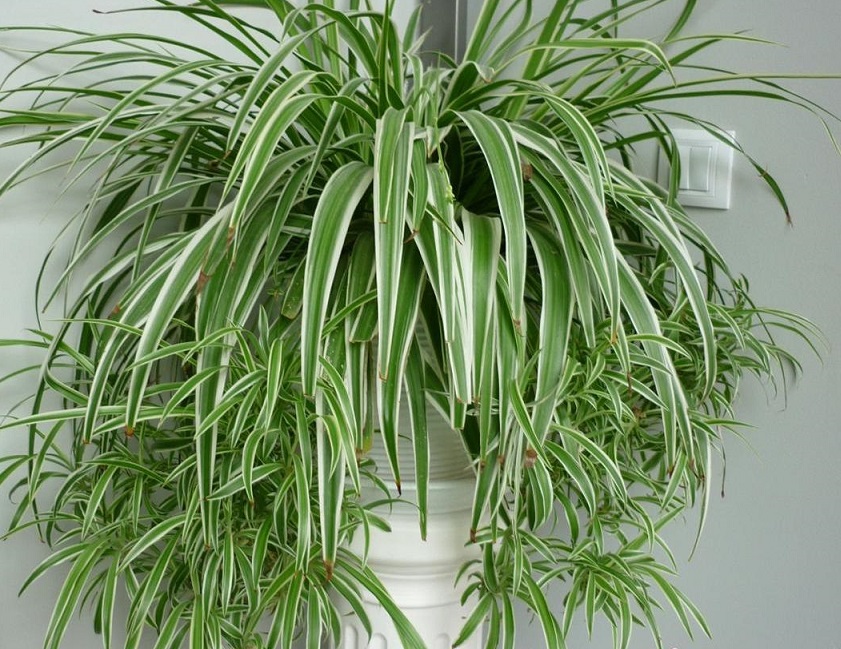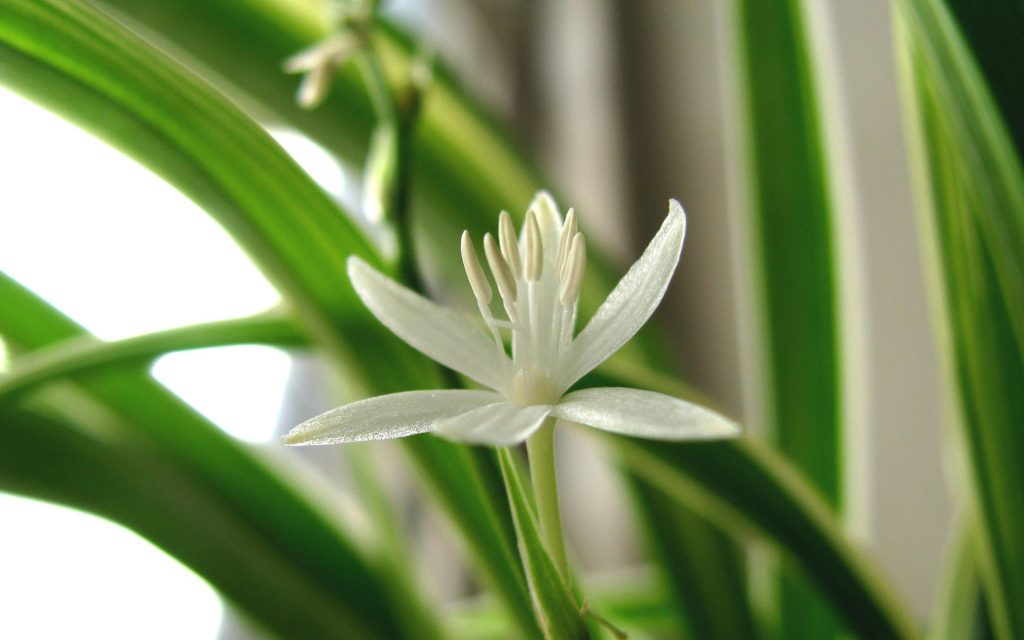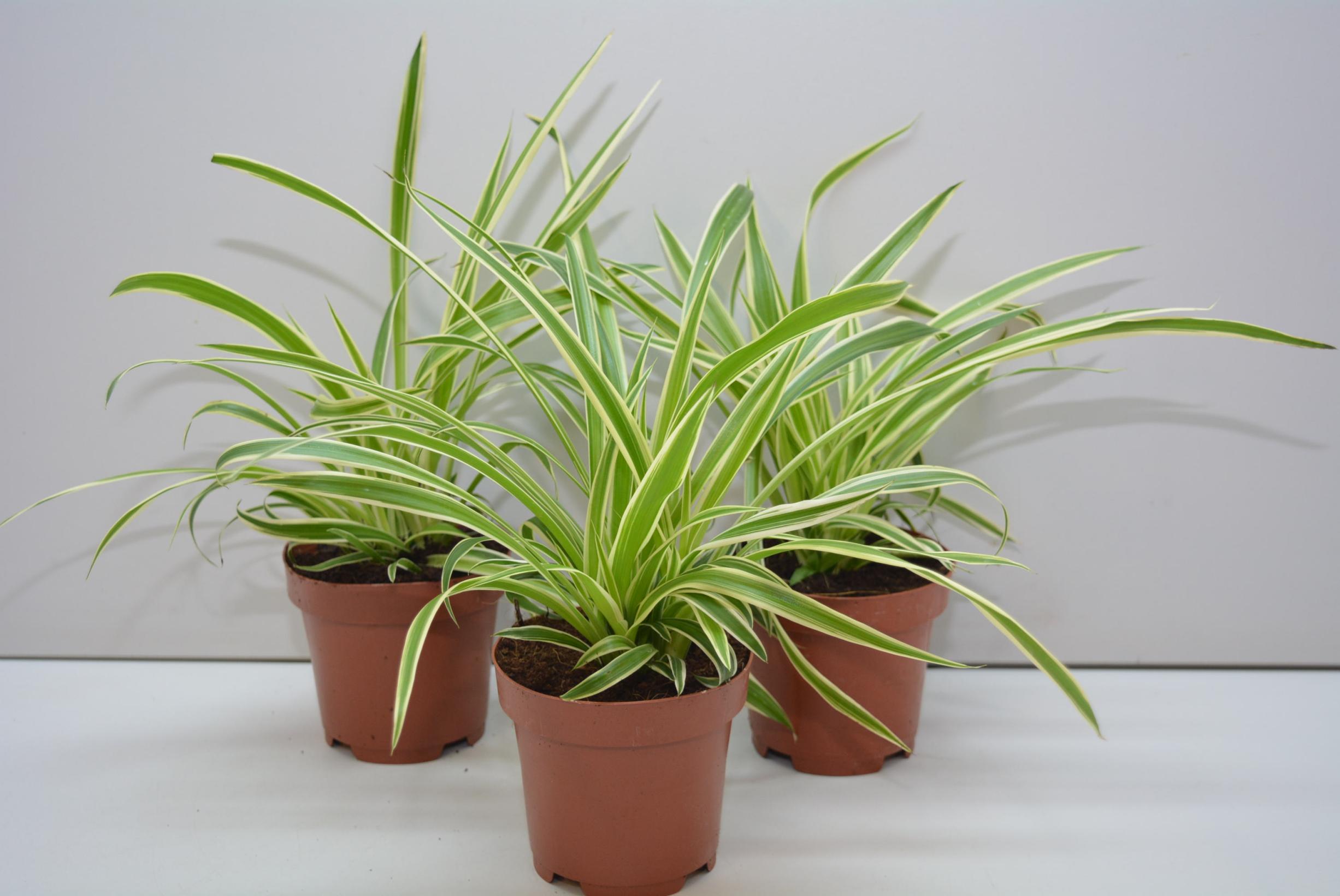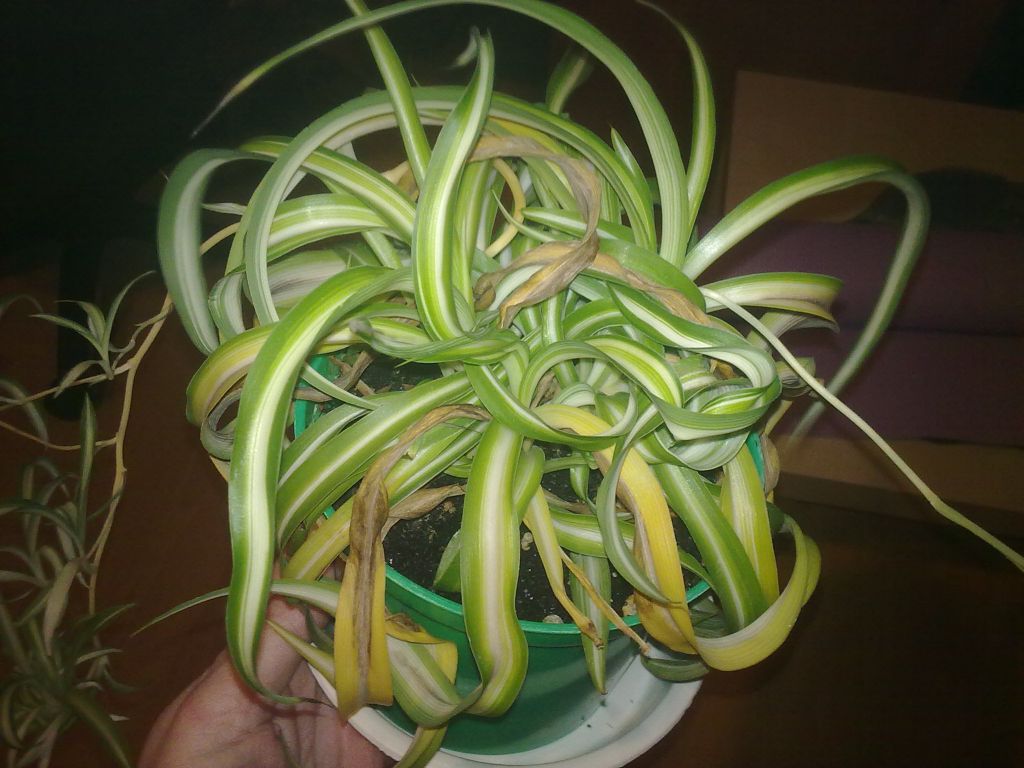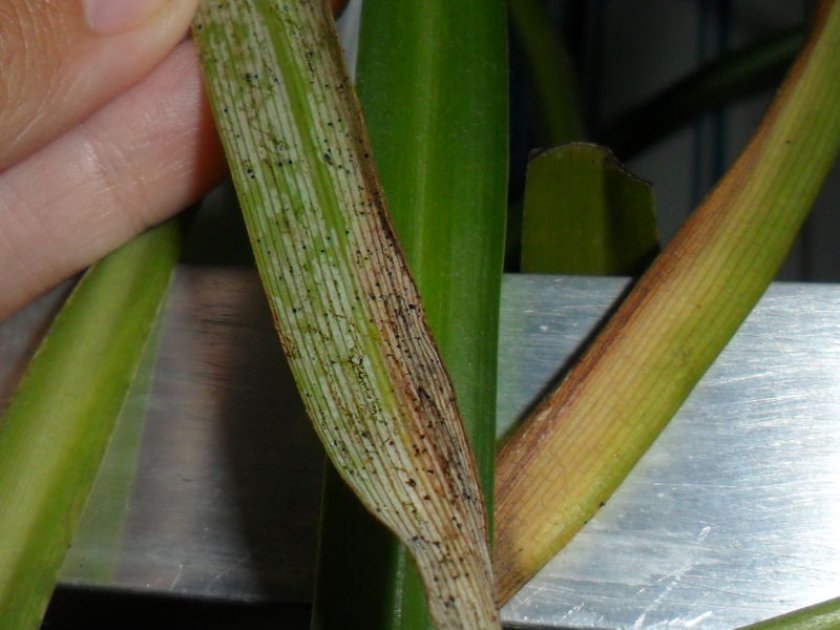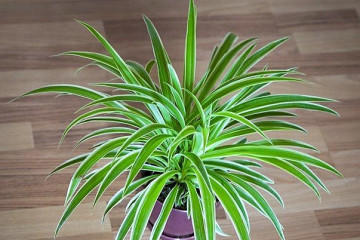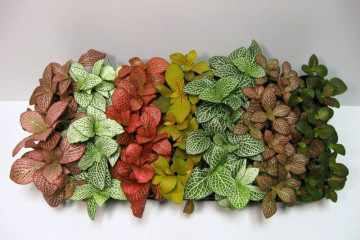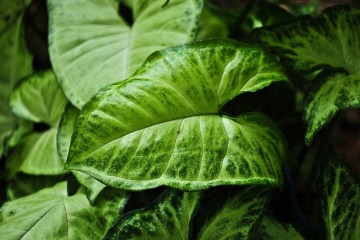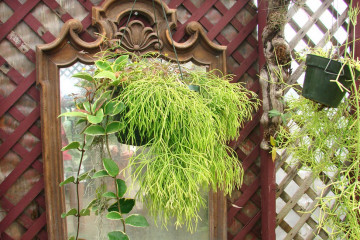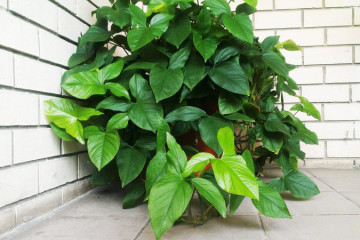Chlorophytum - home care and reproduction
Content:
At home, chlorophytum is usually grown as an ampelous houseplant in containers that are hung, or pots with a flower are placed on special decorative structures.
What does chlorophytum look like?
The chlorophytum plant belongs to the Asparagus family. Depending on the variety, it can reach a height of 25 to 55 cm. The long arched leaves of the plant are of a solid green color, as well as with lighter stripes along the entire surface of the leaf plate. However, modern breeding develops all new varieties with different shapes and colors of leaves.
Briefly about the history of appearance
The birthplace of chlorophytum is the lowlands of rivers in the tropics of the American continent. Most often in its natural environment, the plant is found in South Africa.
Common varieties
The most famous variety of an ornamental plant is crested chlorophytum. Its stem is shortened and the leaves are light green in color. Another widespread variety in floriculture is Cape Chlorophytum. The leaves are lanceolate, taper towards the end. Chlorophytum winged has wide dark green oval lanceolate leaf plates. The petioles of the plant are orange in color.
Can chlorophytum be planted on the street
The flower can be planted in open ground during the spring and autumn periods. Chlorophytum grows better outdoors in summer, the space for the growth of the root system, natural light, constant ventilation and nutrients in the ground affect. However, before the onset of frost, gardeners again transplant the flower into a pot and bring it home.
Chlorophytum: home care
Non-capricious chlorophytum can be grown even by a novice amateur florist. However, this does not mean that the flower does not need supervision at all. You need to take care of the flower, if you follow a few rules, chlorophytum will not cause problems.
Temperature
The plant requires a room temperature of 15 ° C to 25 ° C to grow. It dies at temperatures below 10 ° C. Chlorophytum does not tolerate cold drafts, therefore it is necessary to protect it from unfavorable climatic conditions.
Lighting
Chlorophytum grows well even with minimal room illumination. The main thing is not to completely deprive the flower of sunlight, otherwise, like any plant, its growth will be delayed, and the leaves will be small. The reason is a violation of photosynthesis in plant tissues, which does not function without light.
Watering
A tropical plant loves moisture, so regular watering is necessary when leaving it. In hot summer periods, watering must be plentiful, and in the cool winter months, the procedure is carried out only when the top layer of the soil in the pot dries up.
After watering, the soil must be loosened to avoid stagnant moisture. Only this is done very carefully, otherwise there is a high probability of damage to the root system.
Spraying
Needs spraying of the ground part of the bush. This is done using a spray bottle with water. You need to spray the plant thoroughly, but not with strong pressure, otherwise the leaves and flowers will be damaged. Particular attention should be paid to a small hollow in the middle of the sheet plate, where the largest amount of dust accumulates.
Spraying helps to get rid of dirt and dust that has accumulated on the leaves, and also increases the humidity in the air.
Humidity
The flower requires high humidity in the room. In winter, heating causes the air in the room to become dry, so it is necessary to increase the humidity. To do this, regularly spray the flower with water, hang a damp rag on the heating pipe, or place a container of water next to the pot.
What pot and soil is needed for chlorophytum
Chlorophytum has very thick and long roots, so a spacious container is needed to grow it. In the first years of growth, transplanting and changing the pot is required.
The substrate for planting should consist of a mixture of rotted leaves, turf, sand and humus earth. During cultivation, the soil in the pot should always be loose and moist.
Top dressing
For healthy growth, fertilizing is imperative. In the spring, at the beginning of active growth, they begin to feed the flower with organic and mineral fertilizers. It is best to use a special complex for ornamental deciduous plants. They already contain the required amount of minerals and nutrients.
When and how chlorophytum blooms
The flowering of the indoor decorative flower chlorophytum usually occurs in the summer. But depending on the variety and care, the plant can open its buds at any other time of the year.
Types of flowers
Flowers of all varieties have the same color and shape. The inflorescences of the plant are not of interest in floriculture due to their small size, rarity and unremarkable appearance.
Flower shapes
Small pearl-colored flowers are shaped like small panicles. Each inflorescence has five or six flowers, which are located on a long peduncle. In the middle there are long stamens, the base of which is white and the tips are orange. Some varieties also have white ends.
Flowering period
With proper care, chlorophytum begins to bloom 2 or 3 weeks after the spring transplant. It usually blooms for 1.5-2 months.
How chlorophytum multiplies
It is not at all difficult to propagate the indoor ornamental plant chlorophytum. All methods do not require much effort and time. At home, the flower is propagated most often by dividing the bush and using daughter rosettes. Rarely can multiply through seed.
Reproduction by daughter sockets
Rosettes propagate varieties that do not have antennae. The required number of rosettes is separated from the main bush. Then the sockets are seated in separate containers.
Reproduction by dividing the bush
Dividing a bush is the most common way to reproduce chlorophytum. Usually it is carried out when transplanting into new soil and container.The plant grows quickly and requires frequent replanting, during which the flower can be propagated. The bush is carefully pulled out of the pot and divided into several seedlings with a clean sharp knife. When planting in pots, the cut sites must be treated with crushed activated carbon tablets.
Chlorophytum transplant
Chlorophytum has a powerful root system, and the flower itself grows quickly, so a transplant is necessary every year. The procedure is carried out in early spring. Before transplanting a plant, it is necessary to prepare planting materials and equipment in advance. The plant is tested for diseases and pests. Gardening tools are disinfected.
Planting soil should include humus, compost soil and sand. To avoid stagnation of moisture, a layer of expanded clay chips is placed at the very bottom of the pot for drainage. A little soil is added on top of it, a bush is placed on top and covered with earth around it. You need to plant a flower carefully, often when the soil is tamped, the plant is damaged. Then you need abundant watering with soft water. After that, it will only remain for the plant to periodically look after. How to properly care for chlorophytum has been described above.
Possible problems in growing chlorophytums
Problems and illnesses arise from improper care or lack of it. The plant is resistant to various diseases and pests, but mistakes in cultivation and negligence of the owner of the flower can worsen its condition. If the necessary measures for treatment are not taken in time, the plant may die.
Often problems arise due to the characteristics of the variety, and sometimes, on the contrary, the variety has advantages in its cultivation. For example, when caring for chlorophytum curly at home, flower growers do not face the problem of pests. The fact is that the flower has a high antibacterial property, which scares away parasites.
Chlorophytum leaf tips dry out
Florists often wonder why the tips of the leaves begin to dry in chlorophytum. But not everyone notices that before drying, the plant shows that it is sick. At first, it begins to weaken, has a sluggish and unhealthy appearance, its growth slows down. Then the tips of the leaves begin to turn yellow.
Causes of yellowing of chlorophytum leaves:
- normal soil without fertilizers was used for planting. As a result, the plant lacks nutrients for healthy growth. It is necessary to feed with complex fertilizers, the purpose of which is to saturate the soil with the necessary mineral and organic substances. In the spring, it is imperative to transplant the flower into a nutritious substrate. The drug is applied according to the instructions and the recommended dose prescribed on the package;
- increased dryness in the room where the flower is grown. Frequent airing of the room is necessary without allowing a cold draft. To increase the humidity, the number of watering, spraying increases, and a container of water is placed next to the plant;
- the room temperature is increased. They struggle with the problem, as well as with dry air. On hot days, the plant must be placed in a dark, cool place;
- mechanical damage. Perhaps due to carelessness, the flower was damaged when it was moved to another place or the root was damaged when loosening;
- lack of transplants. The root has grown and it is cramped in a small pot.
Why do chlorophytum leaf tips turn black
Improper care of chlorophytum leads to another problem - blackening of the tips of the leaves. At first, the leaves are covered with brown spots and turn brown, then they begin to turn black. The main reason for this behavior of the flower is excessive moisture in the soil or lack of loosening, which causes stagnation of moisture in the soil.In winter, watering the flower should be stopped so that it can rest.
Growing healthy chlorophytum at home can be done with proper care. The plant, in addition to its beautiful decorative appearance, has useful properties and is appreciated among flower growers. The beautiful flower fights bacteria and germs in the air, making it an ideal indoor plant in a child's room.
